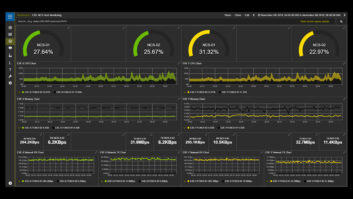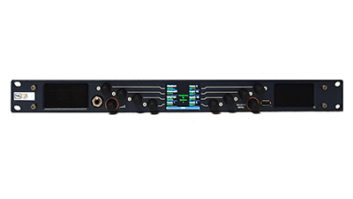It took a global pandemic to push OTT viewing from a slowly transitioning trend to a commonly practiced streaming experience.
Now as lockdown restrictions ease in certain territories and viewers are leaving the confines of their homes, they still want the guarantee of broadcast-quality video on their devices – wherever they are.
This change in viewing habits, coupled with the increased volume of content flowing across the internet, poses the question: how does a broadcaster ensure agile, real-time monitoring of its streams and signals in an IP environment? In TAG Video Systems’ new white paper, IP Monitoring as a Business Strategy: A Guide, the monitoring solutions specialist maps out the road ahead.

The shift from SDI to IP has seen the industry move away from using oscilloscopes, waveform monitors and vectorscopes to monitor television signals. This newfound freedom from hardware, however, presents its own set of challenges when it comes to monitoring more signals than ever, with OTT platforms having to deliver multiple formats to different devices, screen sizes and resolutions. This white paper breaks down these new challenges and outlines best practices for IP monitoring in live production, playout and OTT.
For live production scenarios, software-based multi-viewing of signals enables real-time monitoring of latency, quality and integration to ensure live streams are delivered unimpeded. Software solutions also allow broadcast control systems to be easily configured when monitoring playout, providing operators with critical information via the Cloud. They can monitor OTT delivery all along the supply chain, from camera to consumer, optimising the user experience by sending multiple variants of the stream.
In addition, the white paper details the benefits of Adaptive Monitoring, which facilitates diagnostics at the scale required in the modern world. Instead of dedicating 100 per cent of CPU for full monitoring at a single point, companies can allocate a fraction of that power to maximise the use of their available server resources. This proves even more valuable in Cloud-based operations, dramatically reducing the operational costs of Cloud processing without sacrificing essential error detection.
The final piece of the IP monitoring jigsaw puzzle is the introduction of flexible software licenses —which can be switched off when a facility comes offline and reassigned to any active division around the world, without incurring a penalty. Under this “Zer0 Friction®” business model, TAG projects asset utilisation will reach 80-90 per cent. IP Monitoring as a Business Strategy: A Guide argues that this model is the future of the industry, and as experts in monitoring, TAG’s observations are essential reading.
Download the white paper here.







